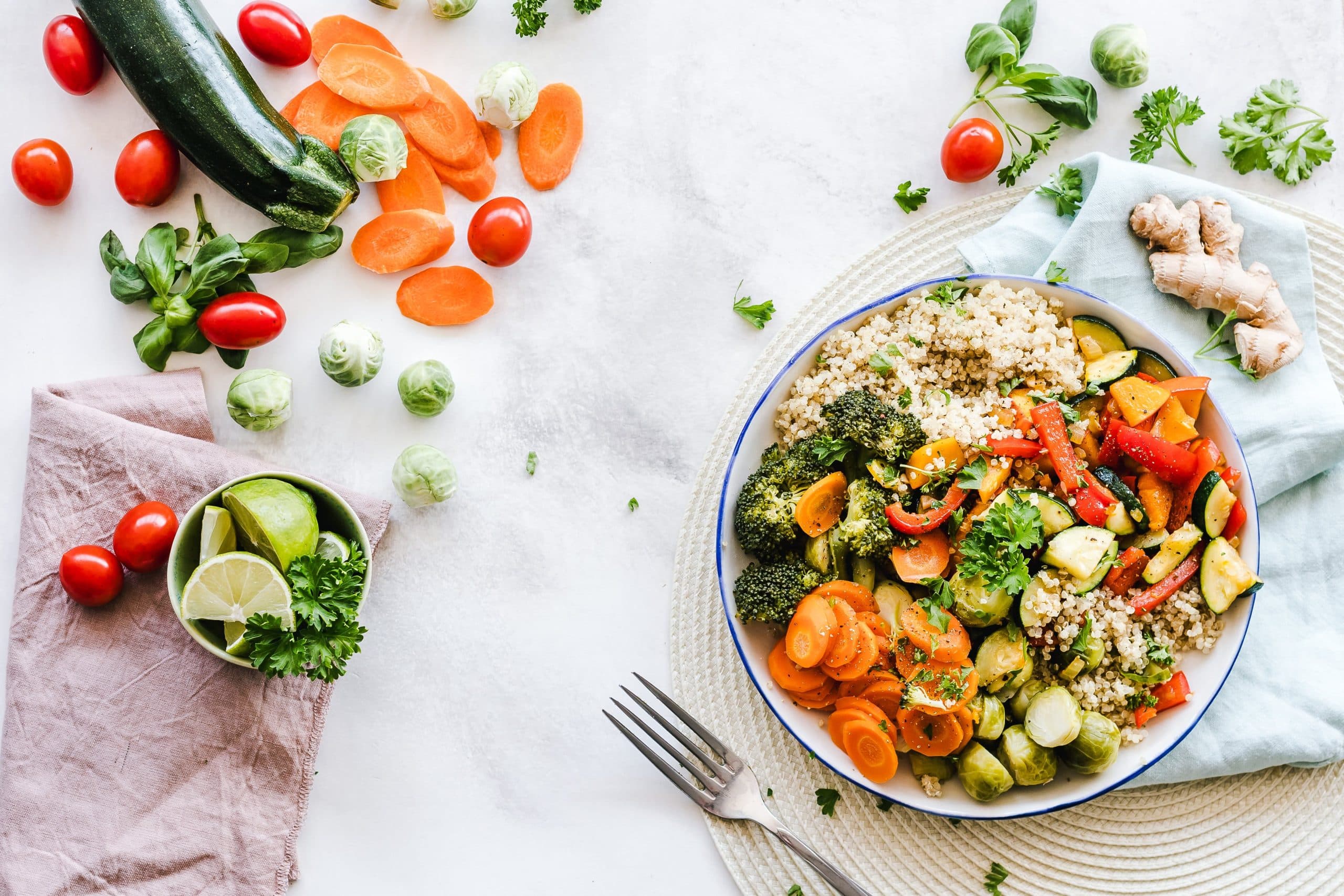Eating healthily, often synonymous with a feeling of deprivation, can instead be a delightful journey of exploring a variety of foods packed with flavor and nutrition. In this guide, you’ll discover the essentials of healthy eating that will revolutionize the way you view your meals. With an emphasis on fresh vegetables, fruits, lean proteins, and whole grains, these recommendations will help you maintain a balanced diet, improve your health, and feel great.
The Fundamentals of a Healthy Diet
A well-balanced diet does wonders for your health by reducing the risk of chronic diseases, promoting healthy body weight, and improving overall quality of life. It incorporates a variety of foods to ensure you get a broad spectrum of nutrients necessary for good health.
A lire aussi : The art of the perfect omelet: tips and techniques
Vegetables and Fruits: The Cornerstone of Healthy Eating
Vegetables and fruits are a vital part of a healthy diet. They are rich in vitamins, minerals, and dietary fiber that can lower the risk of heart disease, stroke, and certain types of cancer. Aim for at least five servings of vegetables and fruits every day. Incorporate a variety of types and colors to get a wide range of healthful nutrients. Berries, leafy greens, and citrus fruits are particularly nutrient-dense.
Protein: The Building Block of the Body
Protein is essential in your diet as it repairs and builds tissues, and is crucial for bone, muscle, cartilage, skin, and blood health. Opt for lean proteins like poultry, fish, beans, and legumes. Limit red meat and avoid processed meats, which are often high in sodium and unhealthy fats.
A lire en complément : The joy of baking artisanal sourdough bread
Whole Grains: The Fuel for Your Body
Whole grains are a good source of vitamins, minerals, and fiber. They help manage weight, reduce cholesterol levels, and lower the risk of heart disease and type 2 diabetes. Choose foods that list “whole grain” as the first ingredient, such as whole-wheat bread, oatmeal, and brown rice.
Decoding the Fat in Your Diet
Not all fats are bad. In fact, your body needs healthy fats for energy and to support cell growth. However, it’s crucial to know which fats to include in your diet and which to limit or avoid.
Good Fats
Monounsaturated and polyunsaturated fats are considered “good” fats. They can lower bad cholesterol levels, reduce heart disease risk, and provide essential fats that your body can’t produce itself. Avocados, nuts, seeds, olives, and fish are excellent sources of good fats.
Bad Fats
Saturated and trans fats, on the other hand, can increase your risk of heart disease and elevate cholesterol levels. Saturated fats are typically found in red meat and dairy products, while trans fats are often in fried and commercially baked products.
The Art of Healthy Cooking
Healthy eating doesn’t mean you have to sacrifice taste. By learning a few simple cooking techniques and recipes, you can prepare delicious, healthful meals right in your own kitchen.
Cooking Techniques for Healthier Meals
Use cooking methods that require little or no added fat, such as grilling, broiling, steaming, or roasting. Aim for a variety of colors and textures on your plate to make meals visually appealing and nutritionally diverse.
Healthy, Flavorful Recipes
Experiment with herbs, spices, citrus, and vinegar to add flavor without adding extra salt or fat. Look for recipes that highlight fresh, whole ingredients and limit the use of processed foods.
Mindful Eating: Pay Attention to Your Plate
Mindful eating is about being present in the moment while eating, paying attention to the flavors, textures, and aromas of your food. This practice can help you recognize hunger and fullness cues, prevent overeating, and increase your appreciation for food.
Understanding Portion Sizes
Even healthy foods need to be eaten in moderation. Learn to understand portion sizes and use measuring tools until you can accurately gauge serving sizes on your own.
Savor Every Bite
Take your time to eat and enjoy each bite. This not only aids digestion, but it also gives your brain time to register that you’re full, preventing overeating.
Balancing Your Daily Meal Plan
A balanced meal plan includes a variety of foods throughout the day, timed to keep you satisfied and energized.
Breakfast: Kick Start Your Day
A healthy breakfast provides energy to start the day and keeps you from overeating later. Opt for a combination of protein, whole grains, and fruits.
Regular, Balanced Meals
Aim to eat every three to four hours to keep your metabolism active and prevent excessive hunger that can lead to overeating. Each meal should include a balance of lean protein, whole grains, and fruits and vegetables.
Hydration: Don’t Forget Your Water
Aim for at least eight glasses of water a day. Staying hydrated aids digestion, nutrient absorption, and helps maintain energy levels. It’s especially important to drink more water when you’re physically active or during hot weather.
By incorporating these principles into your eating habits, you will find that healthy eating is not only manageable but enjoyable too. Remember, the journey to better health through food doesn’t have to be perfect. It’s about making better choices more often and being mindful of what’s on your plate. So, start exploring a world of nutritious, delicious foods today.
Essential Nutrients: What Your Body Needs
A balanced, healthy diet is more than just eating the right types of food. It also involves providing your body with all the essential nutrients it needs to function optimally. These include vitamins, minerals, protein, carbohydrates, and even fats.
Vitamins and Minerals
Vitamins and minerals are vital components of a nutritious diet. Found in all food groups, they aid numerous biological functions, from boosting the immune system to promoting healthy skin and bones. Eating a variety of foods is the best way to ensure you’re obtaining a rich mix of these nutrients. For example, dark leafy greens, like spinach and kale, are packed with vitamins A, C, K, and several B vitamins. Nuts and seeds, on the other hand, are excellent sources of minerals such as magnesium, potassium and zinc.
Protein, Carbohydrates, and Fats
Protein, carbohydrates, and fats are the three main macronutrients that your body requires in larger amounts. While we’ve already discussed the important role of protein, it’s worth emphasizing the vital function of carbohydrates and fats in your diet.
Carbohydrates are the body’s main source of energy, found in abundant amounts in whole grains, fruits, and vegetables. Healthy fats, including monounsaturated and polyunsaturated fats, found in avocados, olives, and fatty fish, are crucial for brain function, nutrient absorption, and overall cell health.
Embracing a Plant-Based Diet
A plant-based diet, focusing on fruits, vegetables, whole grains, legumes, nuts and seeds, can be a powerful way to enhance your health. This way of eating can be full of flavor, completely satisfying and may provide numerous health benefits.
Health Benefits of a Plant-Based Diet
A plant-based diet is naturally low in saturated fat and high in fiber, vitamins, and minerals. This can lead to improved heart health, weight management, and better digestion. Multiple research studies have linked plant-based eating with a lower risk of heart disease, type 2 diabetes, and certain types of cancer.
Making the Transition
Switching to a plant-based diet doesn’t mean you have to give up all the foods you love. It’s about making more mindful choices, gradually increasing the number of plant-based meals in your weekly meal plan, and finding creative ways to incorporate more fruits, vegetables, whole grains, and legumes into your diet.
Conclusion: Embrace the Journey of Healthy Eating
The guide to healthy eating isn’t about rigid dietary restrictions or depriving yourself of the foods you love. Instead, it’s about feeling great, having more energy, and improving your health. Remember, every step towards eating healthy counts, whether it’s swapping refined grains for whole grains, opting for low-fat milk, or adding an extra serving of vegetables to your plate.
Incorporating these principles into your eating habits may seem overwhelming at first, but with a bit of practice, they can become second nature. You don’t have to be perfect, and you don’t have to completely eliminate the foods you enjoy. The goal is to make healthier choices most of the time, and that can start with a single meal.
So, why not start today? Pick up a healthy cookbook, try a new recipe, or simply add a serving of a new vegetable to your dinner. Every small change counts. By embracing the journey of healthy eating, you are taking the first steps towards a healthier, happier you. Remember, your journey towards a healthier lifestyle is a marathon, not a sprint. So, take your time, enjoy the process, and discover the joy of eating a variety of foods that are as nutritious as they are delicious.






